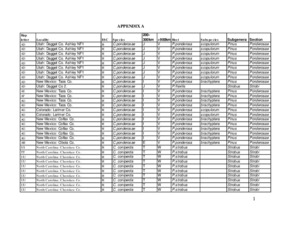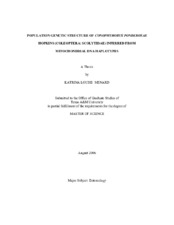| dc.description.abstract | Pine cone beetles (Conophthorus sp.) are serious pests of many forest ecosystems
since they burrow into pine cone tissues for egg deposition, causing the death of the
seeds. Management of these beetles in natural and commercial stands of pines has been
problematic due to lack of understanding about species limits and distribution. This study
was conducted to investigate the phylogeography and phylogenetics of the genus. Several
species represented by disjunct populations appear to be monophyletic including
Conophthorus edulis, C. mexicanus, C. coniperda, and C. conicollens, whereas C.
ponderosae is polyphyletic with many distinct clades isolated by geography. This study
explored whether host use or geography has played a greater role in the diversification of
this genus, focusing on the polyphyletic C. ponderosae and the monophyletic C. edulis.
In the first study, 751bp of the mtDNA CO1 gene were sequenced to reconstruct a
phylogeny of the genus, and the distribution and host use were compared to investigate
whether these factors were significantly associated. The second study addressed
population structure and possible historical influences on the C. edulis and C. ponderosae
populations using a nested clade analysis of the mtDNA haplotypes. Despite potential
limitations due to sampling, several conclusions could be drawn. Three separate
haplotype networks were found for the C. ponderosae haplotypes, indicating that there have been at least three lineages that have associated with P. ponderosa. Geography was
significantly associated with the phylogeny at greater distances (>900km), but host use
was not significant. At the species level, association with geography is variable.
Population structure for C. ponderosae at the species level is minimal, and suggests that
there has not been much time for lineage sorting of the haplotypes based on the nested
clade analysis as compared to C. edulis. | en |



